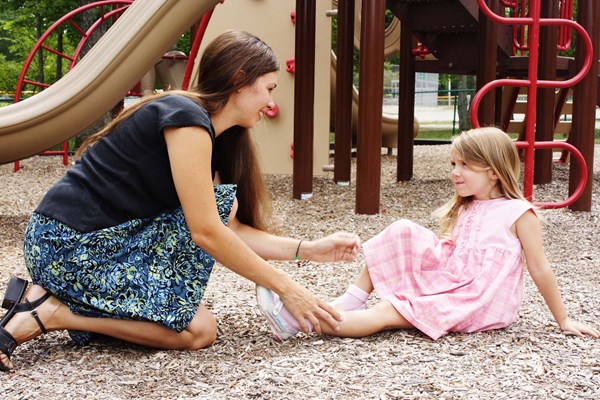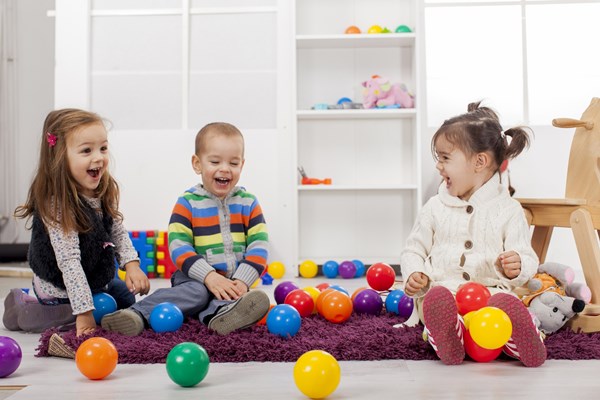Accidents, incidents, and near misses
In a previous blog post we explored Risky Play in Early Years settings and considering how to manage risks associated with this. In this blog we will continue this learning by considering reporting requirements for accidents, incidents and near misses.
The Oxford dictionary defines an accident as “an unpleasant event…that happens unexpectedly and causes injury or damage”. In contrast to the clear definition of an accident, an incident within an early years can often be confusing for less experienced staff members as they struggle to know when an event reaches the threshold of an ‘incident’. The Oxford dictionary uses the word incident to mean “something that happens, especially something unusual or unpleasant”. For early years provisions some examples of incidents could include a near miss of a potentially dangerous event, a child who has bitten another child or an unprofessional disagreement between two employees. The list of incidents which could occur is endless, but these are often the more common ones.

A near miss, as mentioned above, is defined as “a situation when a serious accident or a disaster very nearly happens”. For example, if a child is found holding a bottle of bleach but the cap is fully on and the child did not get harmed by the chemical, this would be a near miss. Near misses should still be documented on incident forms to allow for a review to take place and, where possible, for adjustments to be made to stop the near miss from repeating.
Having a staff team who all fully understand the above is vital to ensuring that all users of your provision are kept safe and avoidable accidents/incidents are controlled
Written reporting
There are a range of accident and incident reporting requirements for early years settings and childminders. Within the Statutory Framework for the Early Years Foundation Stage, paragraph 3.51 explains the requirement to ensure all accidents or injuries and first aid treatments are recorded in writing. While childminders do not need copious written policies or documents, written records of accidents must be maintained. This ‘written record’ EYFS requirement could be within an accident book, accident form or an electronic app.
If your provision uses an accident book and forms, consideration must be given to ensuring that confidentiality is maintained between children. If using a book, there should be one page per child and when sharing with parents/carers you must not show any information about other children. The book or forms must be stored securely, including overnight where they must not be accessible to any other persons using your space (such as cleaners or other users if you are in a community/shared space).
If you use an electronic app (such as Famly, eyLog, etc…) to record and share accident forms, consideration should be given to monitor if parents are accessing the forms at their end. Does your system require parents to acknowledge receipt? If so, is there a system to ensure that someone is monitoring parental confirmations and that the parents are actually aware? If your system requires parents to sign an electronic tablet at the end of the day, are these always charged fully and accessible when needed? Finally, thought should be given to staff who may be covering in an age-group that they usually cannot access via the app – can they still access accident forms for those children as needed?
Some childminders use messaging (such as Whatsapp) to share accident information with parents in a text message. After extensive research and liaising with PACEY we cannot say for certain that this is unsuitable as it is technically ‘in writing’ as per the EYFS requirements. However, as accident reporting is a legal requirement and has the potential to be a document used for legal purposes in the future, Tigerlily Training strongly recommends that childminders use accident forms/books to officially document accidents, incidents or near misses. Photos of these accident forms/books could then be shared via Whatsapp with the child’s parents if preferred however parents should still be asked to sign the official accident form/book when collecting their child. Use of electronic accident logging (via apps like Famly, eyLog, etc… mentioned above) would also suffice.

Analysing trends
A benefit of reviewing accident reports is that is allows us to consider if any further accidents, incidents or near misses could be avoided in future. Reviews could take place on each report as it is logged or could be over a longer period to see if there are any trends. Trends might include:
- Accidents in repeated spaces (such as slippery flooring in a garden),
- Increase in accidents when under the supervision of the same staff members (potentially they may need additional training in managing hazards or supervision),
- Specific timeframes in the day (for example, before sleep or home time),
- Resources which are broken or may cause conflict between children (favourite toys may increase instances of biting while children are still developing turn taking skills).
Once a trend is identified, actions should be taken to address the issues identified. It can be beneficial to log in writing what has been done and then set a timescale to review if the changes have been impactful in reducing accidents, incidents or near misses. If there hazards which cannot be controlled (such as uneven paving just outside your provision), ensure that all users are aware of the hazard and consider if signage can be put up to remind/inform others. Setting a timescale to review if the changes have worked will allow you to take further actions if the number of accidents, incidents or near misses has not reduced.
Reporting to Ofsted
Some accidents or incidents are reportable to Ofsted. Paragraph 3.52 of the EYFS gives some detail on this but further, detailed information can be found on the DfE ‘Report a Serious Childcare Incident’ reporting page.
Ofsted have produced clear guidance on what needs to be reported to them. This includes:
Serious injuries, accidents and illnesses
You must tell Ofsted about any of the following:
- anything that requires resuscitation
- admittance to hospital for more than 24 hours
- a broken bone or fracture
- dislocation of any major joint, such as the shoulder, knee, hip or elbow
- any loss of consciousness
- severe breathing difficulties, including asphyxia
- anything leading to hypothermia or heat-induced illness.
Minor injuries
You do not need to tell Ofsted about minor injuries, even if treated at a hospital (for less than 24 hours). These include:
- animal and insect bites, such as a bee sting that doesn’t cause an allergic reaction
- sprains, strains and bruising, for example if a child sprains their wrist tripping over their shoelaces
- cuts and grazes
- minor burns and scalds
- dislocation of minor joints, such as a finger or toe
- wound infections
Substances and electricity
If a child in your care suffers any injury from, or requires medical treatment for, any of the following situations you must tell Ofsted:
- from absorption of any substance:
- by inhalation
- by ingestion
- through the skin
- from an electric shock or electrical burn
- where there is reason to believe it resulted from exposure to:
- a harmful substance
- a biological agent
- a toxin
- an infected material
Eyes
You must report to Ofsted if a child suffers any loss of sight, whether it is temporary or permanent. You must also tell us about any:
- penetrating injury to the child’s eye
- chemical or hot metal burn to the child’s eye

Reporting to RIDDOR
RIDDOR is the acronym for the Reporting of Injuries, Diseases and Dangerous Occurrences Regulations, which were first implemented in 2013. Certain events are notifiable to RIDDOR if they take place. This includes events which happen to employees of a company, children who might attend, visitors who are on site at your provision and any other users of your space (if you hire your building out at a weekend, for example).
It is important to note that not every accident or incident is reportable. The reporting requirements for RIDDOR vary depending on both the events which took place and the person who was potentially harmed (e.g. employee, visitor or child). The HSE has produced specific guidance for schools on what is reportable. While this does not clarify it is for early years settings too, the content appears to be transferable so should be followed - Incident reporting in schools (accidents, diseases and dangerous occurrences): Guidance for employers
References and reading:
- Health and Safety toolbox - https://www.hse.gov.uk/toolbox/index.htm
- Slips and trips - https://www.hse.gov.uk/toolbox/slips.htm
- Reporting accidents and incidents at work - https://www.hse.gov.uk/pubns/indg453.pdf
- RIDDOR - https://www.hse.gov.uk/riddor/
- Incident reporting in schools (accidents, diseases and dangerous occurrences): Guidance for employers - https://www.hse.gov.uk/pubns/edis1.htm
- Guidance on what to report to Ofsted - https://www.gov.uk/guidance/childcare-reporting-childrens-accidents-and-injuries
- Reporting form for Ofsted - https://www.gov.uk/guidance/report-a-serious-childcare-incident